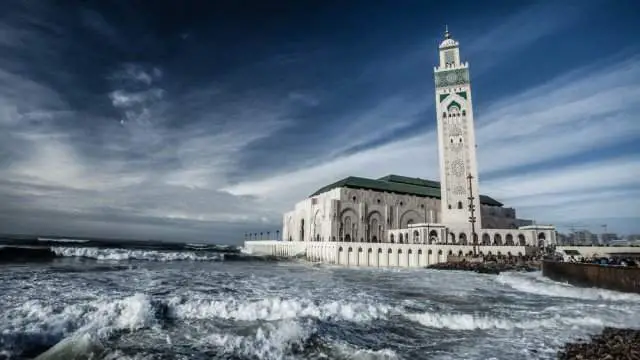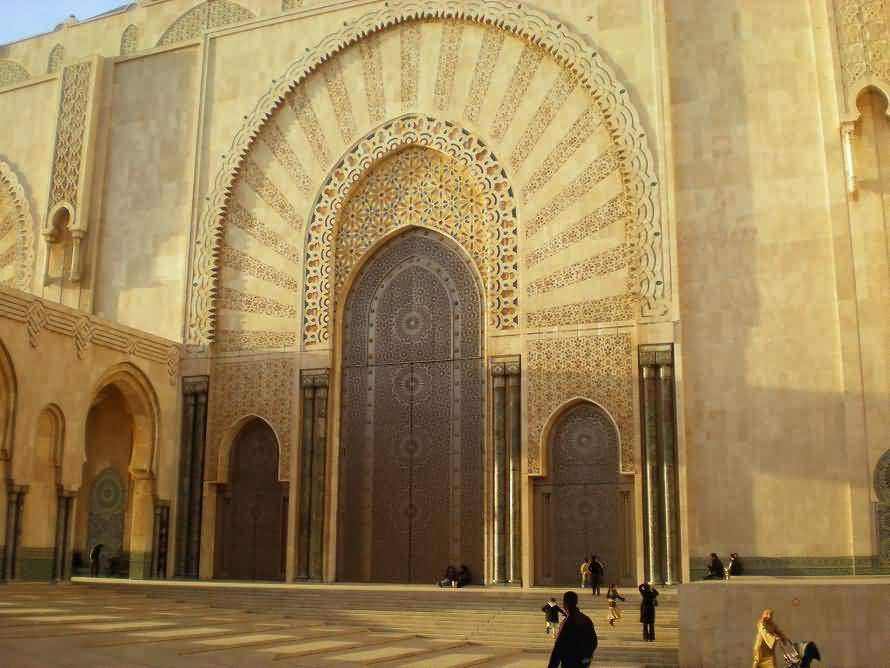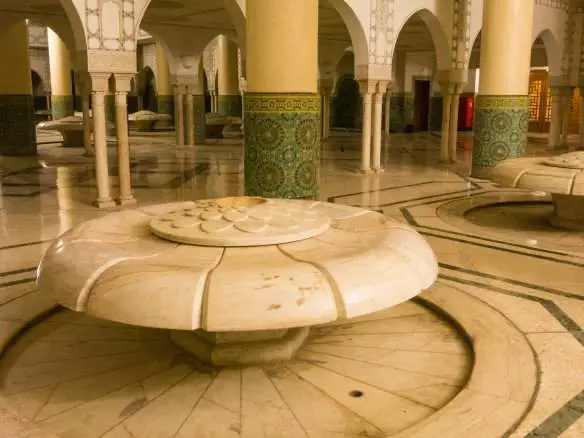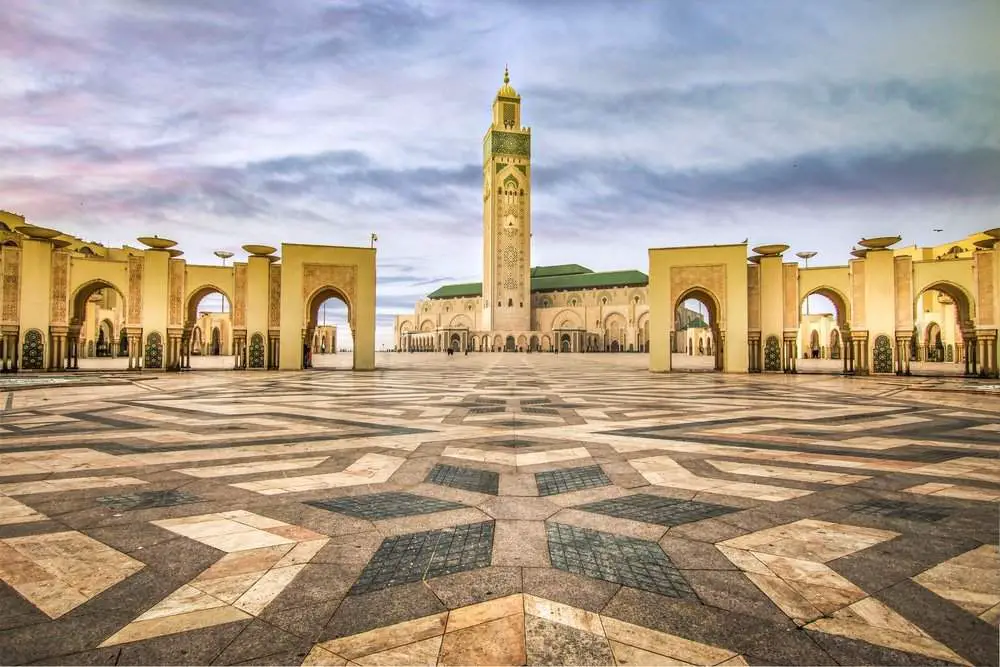Many adjectives come to mind when I think of the Hassan II Mosque in Casablanca: majestic, spectacular, grandiose… The location of the mosque on an artificial peninsula is due to the fact that Hassan II, who ordered it to be built, was inspired by a verse in the Koran that speaks of “The throne of God was built upon the waters”.

Schedule: Every day (except Friday) until 14:00. In summer until 15:00 and in Ramadan until 11:00
Admission fee: 120 dirhams (general), 60 (students), 30 (under 12)
Date of construction: 30-08-1993
Extension: 60,000 m2 approx. (5 floors)
From the outside it has an incredible view, it looks like an island in the middle of the sea. It was designed by the French architect Michel Pinseau, the same who designed the Moroccan pavilion at the Universal Exhibition in Seville. Its construction lasted eight years, being inaugurated in 1993 coinciding with the day of the birth of the prophet Mohammed.
Here are the best places to stay in Casablanca.
Get the best deals and discounts on hotels here.
Characteristics of the Hassan II Mosque
The Hassan II Mosque has become a symbol for the city. It rises imposingly over Casablanca and can be seen from any point in the city. It is the second largest in the Islamic world, after Mecca in Saudi Arabia, and its quadrangular, green-tiled minaret, which reaches 200 metres, is the tallest. At its summit, a laser beam is projected at night to mark the direction of Mecca, with a range of about 30 km.

It already begins to surprise when we approach it and we understand that in its construction about 2,500 workers and 10,000 craftsmen worked, coming from all over Morocco, who made the decorative elements of the interior using materials such as wood, plaster, marble or granite.
But the greatness of the mosque is in its interior. In the prayer room, with a capacity for more than twenty thousand faithful, 78 pillars support a cedar wood ceiling that has an opening system that is usually opened in summer, so you can see the sky from the inside.
In the lower part of the mosque is the ablutions area in which 41 marble fountains and stucco walls stand out. Normally the faithful use the taps on the wall for ablutions before praying, as these fountains are only used on special occasions. The hamamm is not open to the public, that is, it was only built to make the tour more complete. The richness of the work of Moroccan craftsmen is present everywhere in the mosque: carved wood, latticework, tiles, frescoes and geometric mosaics, stuccoes…

And a few other curiosities… The latest technologies have also been used in its construction, for example earthquake resistance, electric doors, the floor is equipped with underfloor heating and the minaret has a rapid lift in which you can reach the top in one minute. There are also loudspeakers to amplify the voice of the magnet which are perfectly integrated into the coffered ceilings of the columns, the impressive Murano glass chandeliers, which hang from the prayer room, weigh about a thousand kilos and the building has 25 titanium and brass doors.
The complex also has a madrassa, a specialised library, a national museum, several conference rooms and an underground car park.

And after all this, how much do you think it might have cost? Well, yes, an outrage. It was about 505 million euros that were financed by public subscription, the rest was contributed by companies, individuals and the Royal Treasury.
Practical information
As I imagine you know, it is the only mosque in Morocco that is open to non-Muslims. However, it is only possible to visit it on a guided tour. The tour is in three languages: English, French and Spanish. The guides usually speak English quite well and explain not only what we see but also Ramadan, the separate prayer of men and women and the Koran. You can ask them all the questions you want.
As regards timetables, visits take place every day, except Fridays, at 9:00, 10:00, 11:00 and 14:00, and in summer there is another at 15:00. During Ramadan visits are reduced, normally at 9:00 and 11:00.
The entrance fee is 120 dirhams (about 11 euros). There are special rates for students, 60 dirhams, but you must present your International Student Card, and for children under 12, 30 dirhams. It is possible to pay by credit card.
Here are the Best Hotels in Casablanca.
A Few Tips
It is important to remember that it is a temple of great religious significance and it is advisable to show respect at all times. And this is extended to the dressing room: closed shoes and long trousers must be worn. Women do not have to cover their heads.
Ah! it is advisable to wear socks, although they give plastic bags, since you have to take off your shoes to access the prayer room.
The surroundings are also beautiful. Nearby there is a replica of Rick’s Café, the cabaret that appears in the film Casablanca which, although it was shot entirely in Hollywood, everyone thought it was shot in Morocco.
And just to tell you that it is a visit worth making, the Great Mosque Hassan II is a masterpiece of Arab-Muslim architecture and, both from outside and inside, it offers a spectacular image.